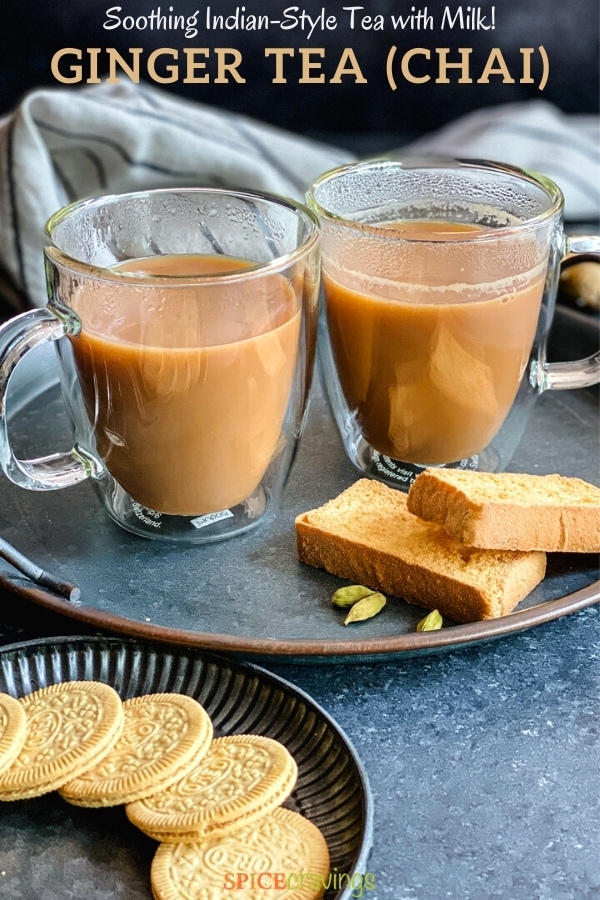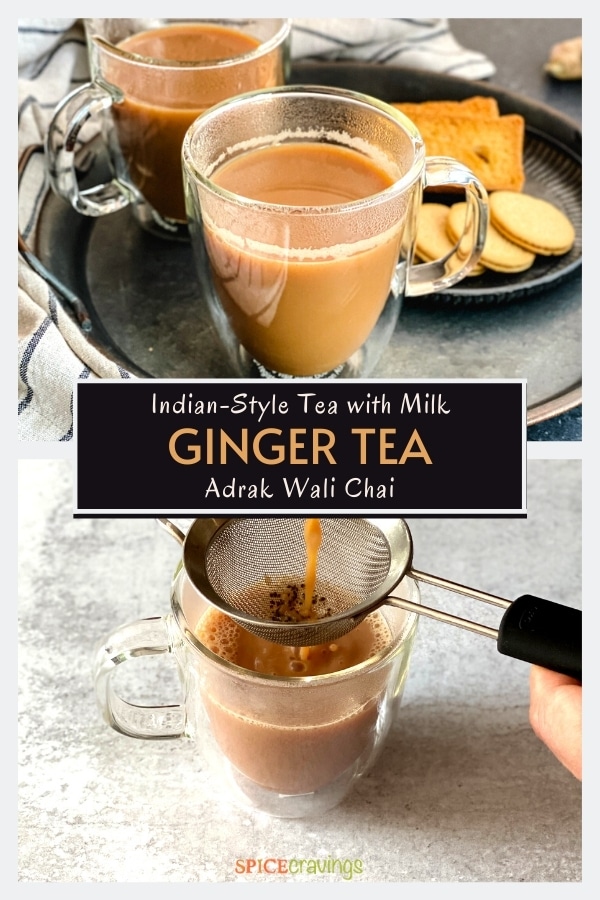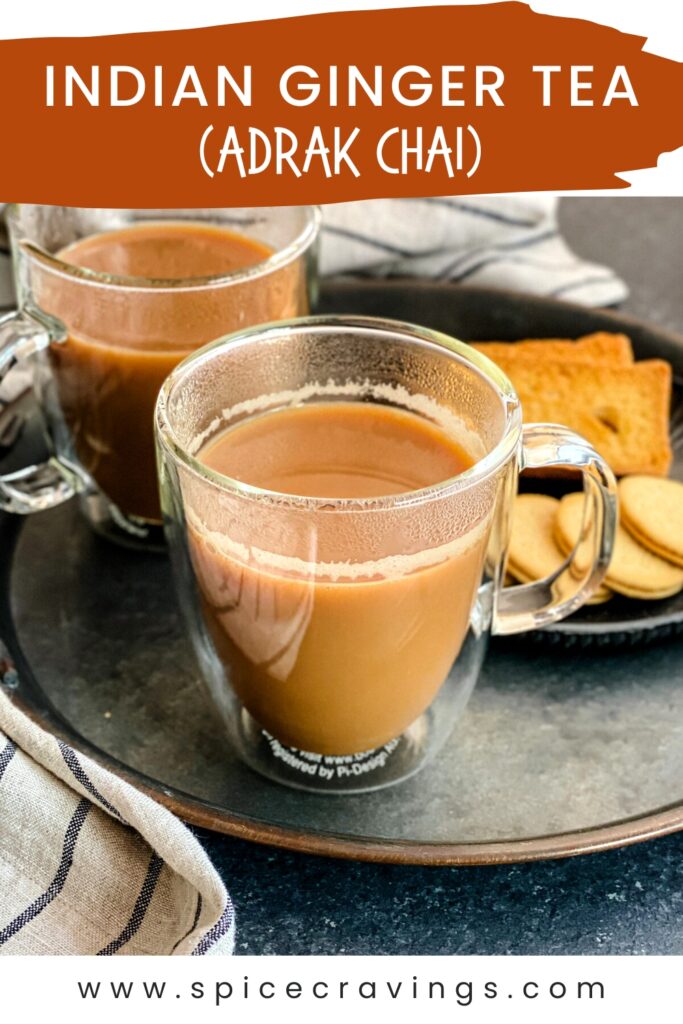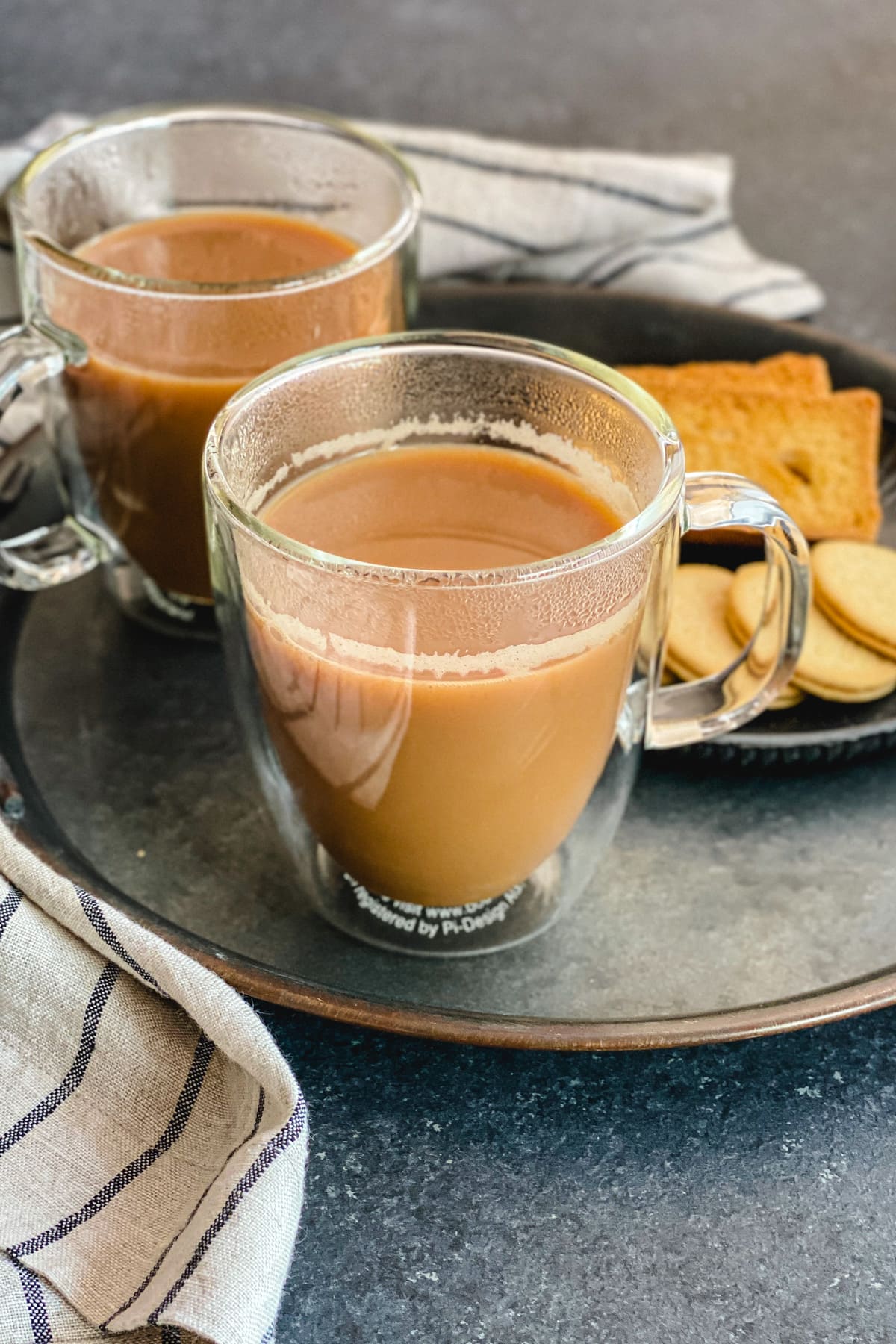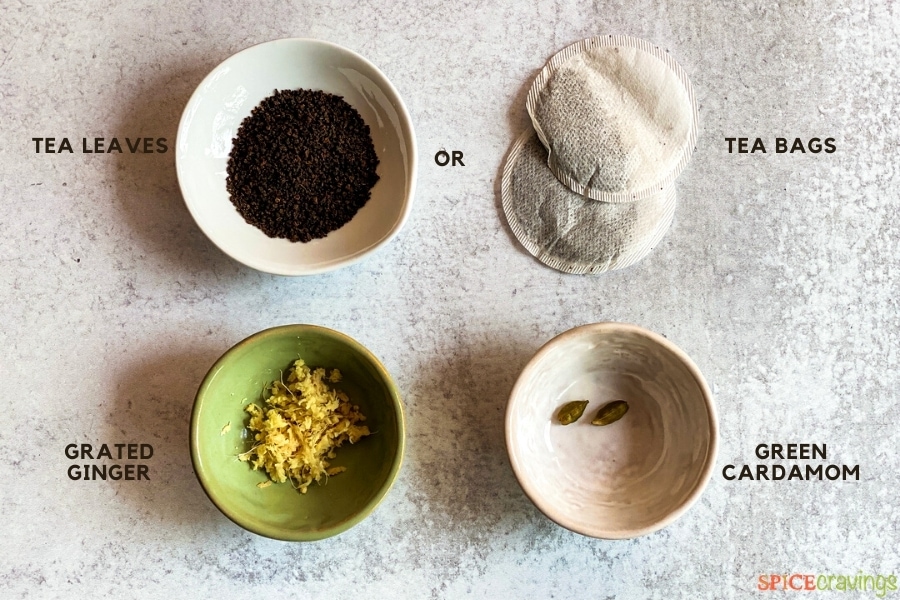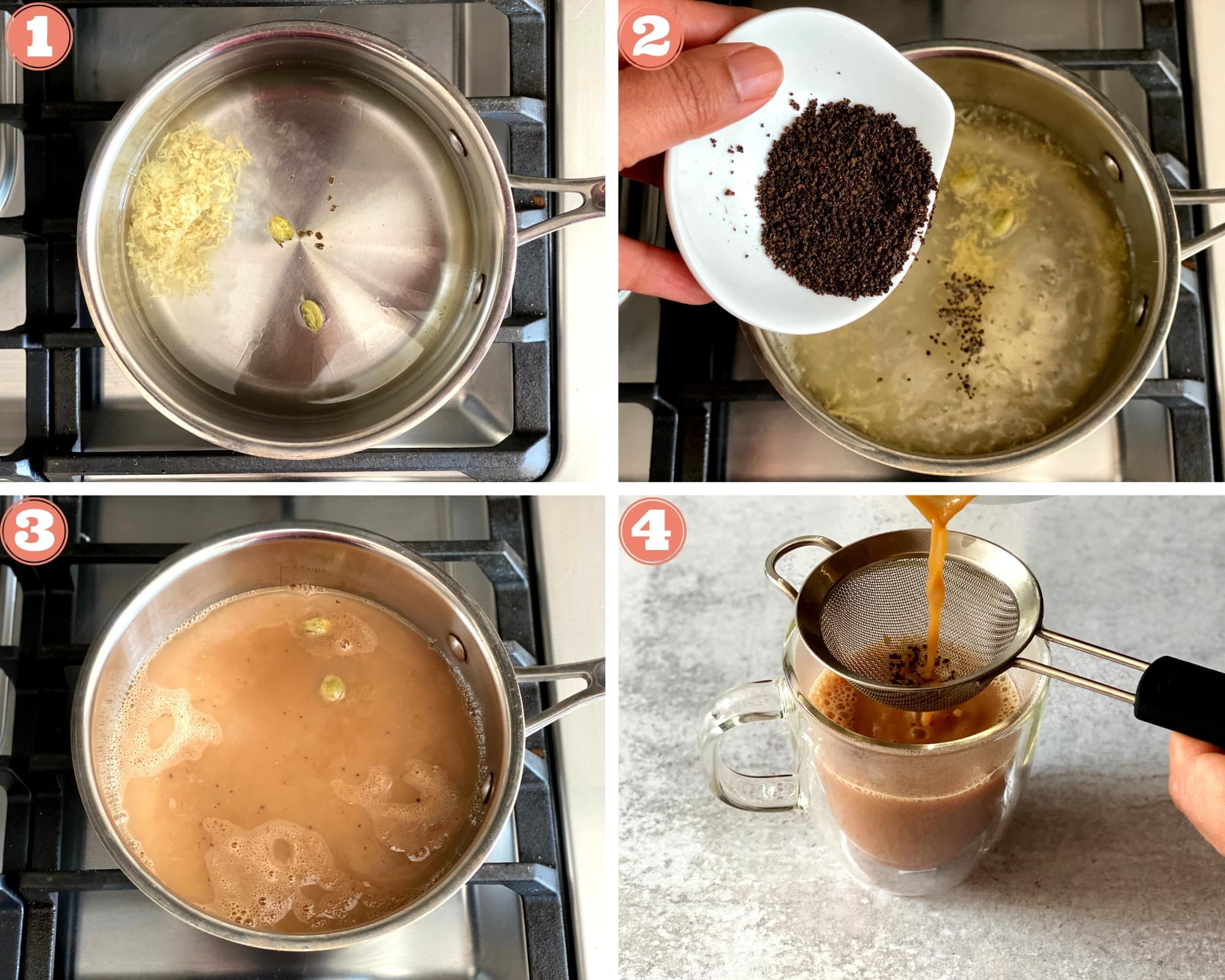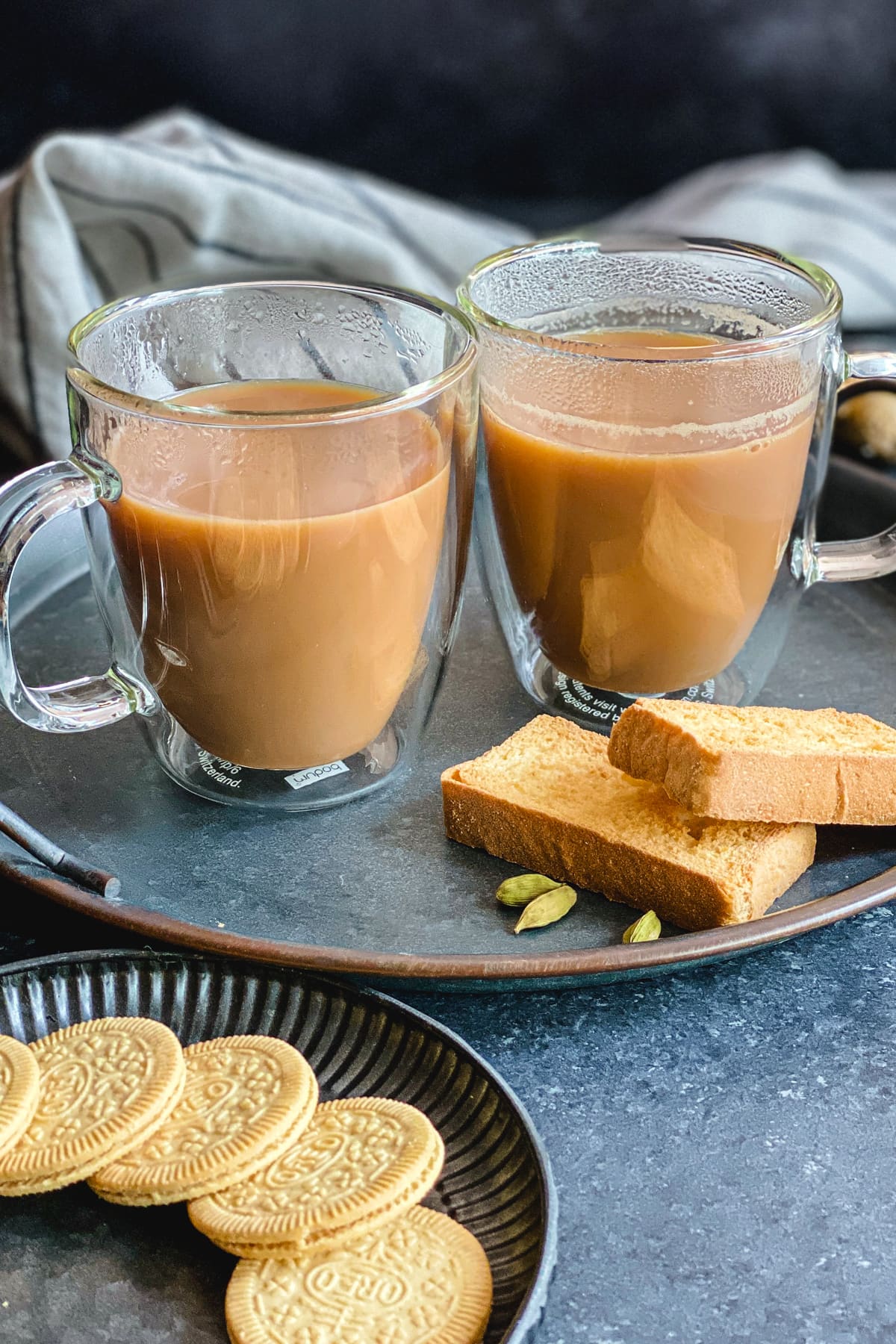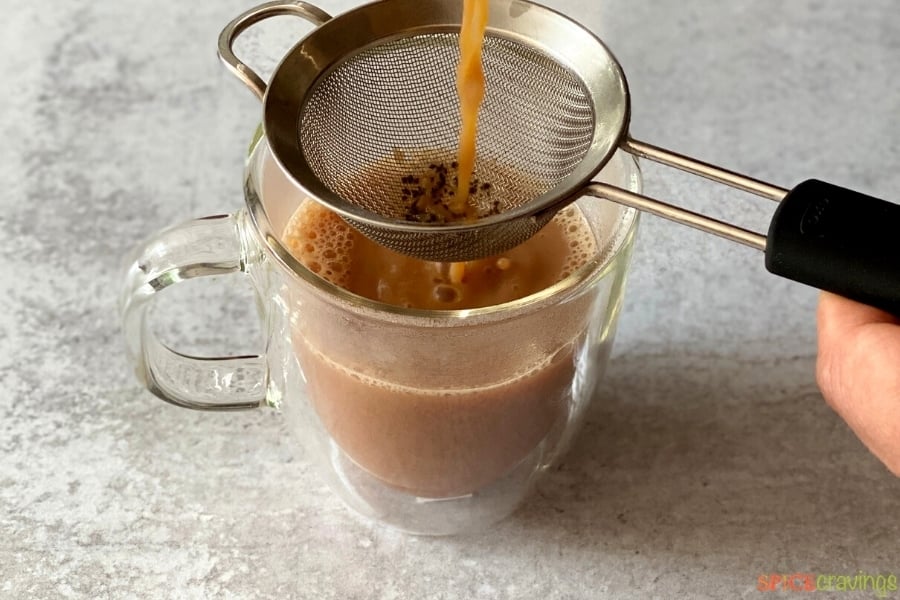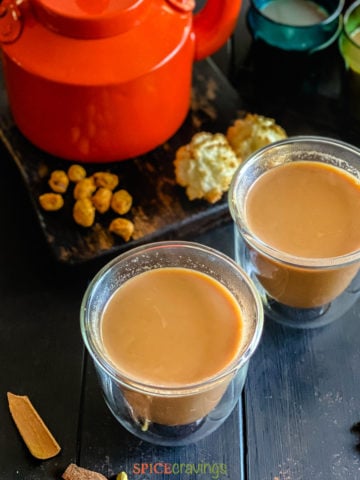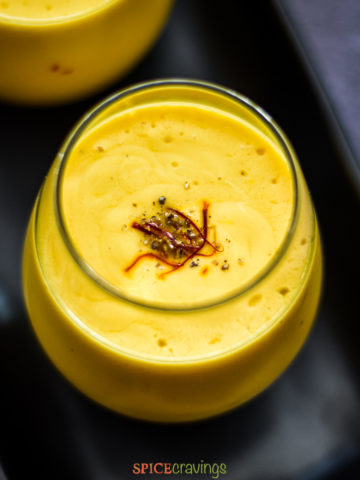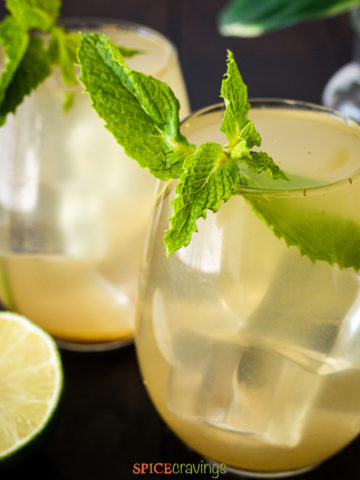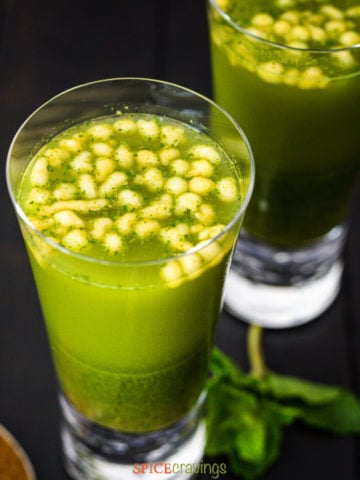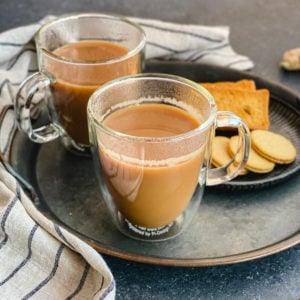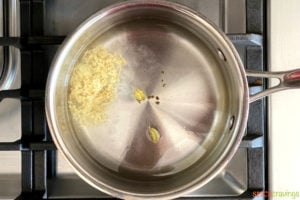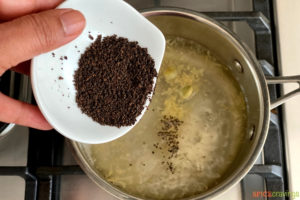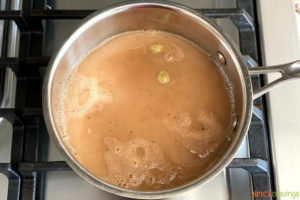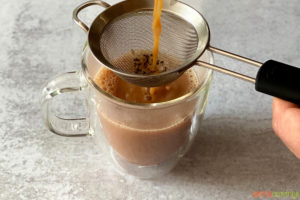It won’t be an exaggeration to say that the aroma, flavor, and taste of this cherished Ginger Chai is what gets more than one billion people out of bed every single day… including me!
Tea, or chai, is perhaps the most common beverage in most north-Indian homes. Even when guests visit unannounced, they rarely leave without having a cup of tea 🙂
What is Ginger Tea - Ginger Chai?
Ginger chai refers to an Indian-style Ginger tea made by brewing black tea leaves in hot water, that is infused with freshly grated ginger root. It is then simmered with a splash of milk and optionally sweetened to taste. Ginger is called ‘Adrak’ in Hindi and tea is called ‘chai’. In my home, our mornings start with a cup of adrak wali chai, made by hubby! Fun fact: The term “chai” originated from the Hindi word “chai”, which was derived from the Chinese word for tea, cha. So, technically, Chai and Tea mean the same thing. So, saying Chai-Tea Latte is like saying ‘Tea Tea’ Latte 🙂
Ingredients - Notes & Substitutions
How to Make Ginger Tea (Adrak Chai)
Here’s a 10-minute recipe to make a comforting cup of tea: Simmer water with ginger: Place a saucepan on medium-high heat. Add water, grated ginger, and gently crushed cardamom pods, and let the water come up to a simmer. (Pic 1) Add black tea: Add tea leaves (or tea bags) and bring everything to a rolling boil. (Pic 2) Add milk: Add milk and bring the tea to a full boil again. Reduce the heat to medium-low and let it simmer for a minute. Turn off the heat. (Pic 3) Strain in cups: Using a fine mesh strainer, pour the tea into two cups. Add sugar or honey to taste, if using. Enjoy! (Pic 4)
Serving Suggestions- What goes best with Adrak ki Chai
Ginger tea is the perfect accompaniment for Indian sweet and savory snacks like Pakora, Samosa Pinwheels, or Almond Spice cookies. It also makes for a great finale after brunch recipes like Idli, Bombay Toast, Uttapam Waffles, or Egg Bhurji. My favorite afternoon snack includes a hot cup of chai with a slice of Apple Cinnamon cake, Pumpkin bread, or a warmed Banana Chocolate Muffin.
How to Store
Ginger chai gets darker in color and bitter in taste if stored for longer, or reheated multiple times. If making a large batch, store it in an insulated thermos and use it within 5 hours.
How to Make Ginger Tea for a Party
Indian gatherings are incomplete without a round or two of chai! Whenever I’m hosting a large group of family and friends, I follow these tried and tested tips for stress-free entertaining:
Take a head count. Make a few extra as you’ll always have a few people who will change their minds when they see a piping hot cup of tea! For a large crowd, you can prepare the chai a couple of hours ahead of time and store it in a party-size thermos. Alternatively, prepare the water with ginger and cardamom and bring it to a boil. Turn off the heat and cover the pot. Now when you’re ready to make chai, simply add another 1 cup to make up for the evaporation, bring it to a boil again, add tea bags, and milk, and follow the same process.
Ginger Tea Variations
Masala Chai: Add ¼-½ teaspoon of tea masala (chai masala) to the sauce pan along with ginger and cardamom. Here’s a detailed recipe for Masala chai. Kadak Chai: Kadak means ‘strong’ in English. Kadak chai is typically served in street-side food kiosks in India. For that, add an extra ¼ cup of both, water and milk, and simmer the chai for 2 to 3 minutes. Creamier Tea: For a richer chai, add 1½ cups water + ¾ cup milk instead. Alternatively, use full-fat milk. Stronger Ginger flavor: Add more or less ginger based on your preference. Add lemongrass: Add a few pieces of lemongrass leaves to enhance the citrusy flavors of ginger.
Recipe Tips & Notes
More Indian Drink Recipes
Some older studies indicate that ginger helps decrease motion sickness, the queasy feeling one experiences in moving vehicles. The presence of volatile oils and phenol compounds called gingerols, ease nausea from morning sickness or chemotherapy. Some studies show that ginger consumption can be protective against heart disease, can help lower blood pressure, prevent blood clots, relieve heartburn and improve blood circulation. (It’s always a good idea to confirm these benefits with your doctor) Ginger has been used to treat inflammation for centuries. It’s been shown in several studies to help relieve pain from osteoarthritis of the knee in particular.
📖 Recipe
